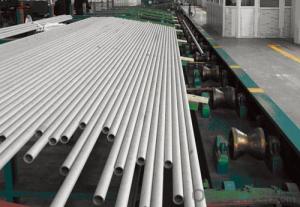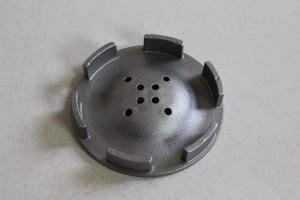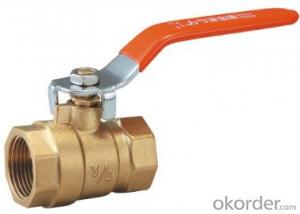Bead Blasted Stainless Steel
Bead Blasted Stainless Steel Related Searches
Best Paint For Stainless Steel Blanket Insulation For Steel Buildings Primer For Galvanized Steel Foam Filter For Stainless Steel H S Code For Stainless Steel Surface Grinding Wheels For Stainless Steel Surface Grinding Wheels For Hardened Steel Hole Saw For Stainless Steel Paint For Stainless Steel Stainless Steel For BbqHot Searches
Steel Mesh Panels For Sale Price For Stainless Steel Scrap Scrap Price For Stainless Steel Price For Stainless Steel Stainless Steel Tank For Sale Stainless Steel Sheets For Sale Cheap High Tea Sets For Sale Stainless Steel Tanks For Sale Stainless Steel For Sale High Density Fiberboard For Sale Solar Hot Water Collectors For Sale Scaffolding For Sale In Uae Scaffolding For Sale In Ireland Scaffolding For Sale In Houston Type Of Inverter For Solar Price Of Shipping Containers For Sale Types Of Inverter For Solar Stock Price For Aluminum Used Solar Inverter For Sale Steel Mesh Panels For SaleBead Blasted Stainless Steel Supplier & Manufacturer from China
Okorder.com is a professional Bead Blasted Stainless Steel supplier & manufacturer, offers integrated one-stop services including real-time quoting and online cargo tracking. We are funded by CNBM Group, a Fortune 500 enterprise and the largest Bead Blasted Stainless Steel firm in China.Hot Products
FAQ
- Yes, stainless steel sheets are highly suitable for food preparation surfaces. Stainless steel is a popular choice for kitchen countertops, cutting boards, and other food preparation surfaces due to its numerous beneficial properties. Firstly, stainless steel is non-porous, which means it does not absorb or retain odors, flavors, or bacteria. This makes it extremely hygienic and easy to clean, reducing the risk of cross-contamination. Additionally, stainless steel is resistant to corrosion, staining, and heat, making it durable and long-lasting. Its smooth surface also makes it ideal for rolling out dough or chopping ingredients. Furthermore, stainless steel is a non-reactive material, so it does not interact with acidic or alkaline foods, ensuring the taste and quality of the prepared food is not compromised. Overall, stainless steel sheets are an excellent choice for food preparation surfaces due to their cleanliness, durability, and food safety qualities.
- There are several measures that can be taken to prevent warping of stainless steel sheets. These include: 1. Storage and handling: Stainless steel sheets should be stored in a clean and dry environment, away from moisture or excessive heat. It is important to handle the sheets carefully, avoiding any unnecessary bending or pressure that could cause warping. 2. Welding techniques: When welding stainless steel sheets, it is crucial to use the correct techniques and procedures. Proper heat control and weld placement can help minimize the risk of warping. Preheating the sheets before welding can also prevent distortion. 3. Stress relieving: This involves heating the stainless steel sheets to a specific temperature and then cooling them slowly. Stress relieving helps eliminate residual stresses that could lead to warping. 4. Support during machining: Proper support is important when machining stainless steel sheets to prevent warping. Clamps or fixtures can be used to securely hold the sheets in place. 5. Minimize heat exposure: It is important to avoid prolonged exposure to high temperatures during processes like cutting, grinding, or forming. Using coolants or lubricants during these processes can dissipate heat and minimize the risk of warping. 6. Choose the right grade and thickness: Selecting the appropriate grade and thickness of stainless steel sheets for a specific application is essential. Thicker sheets generally have more resistance to warping, while certain grades may be more prone to distortion. Consulting with a materials expert or engineer can help in selecting the right stainless steel sheets for a project. By implementing these preventive measures, the risk of warping stainless steel sheets can be significantly reduced, ensuring their integrity and longevity.
- Stainless steel sheets prove to be highly suitable for applications requiring strict cleanliness and hygiene standards. Their exceptional corrosion resistance renders them ideal for environments with such requirements. The material's non-porous nature ensures it neither absorbs liquids nor harbors bacteria, thus simplifying cleaning and maintenance. Moreover, the smooth and polished surface of stainless steel discourages the accumulation of dirt, grime, and bacteria. Thanks to its durability and strength, stainless steel sheets resist scratches and dents, ensuring a long-lasting and hygienic surface. Because of these hygienic properties, stainless steel sheets find common use in the food and beverage industry, pharmaceutical industry, healthcare facilities, and laboratories.
- The standard size of a stainless steel sheet can vary depending on the manufacturer and the specific application. However, common standard sizes for stainless steel sheets include 4 feet by 8 feet, 5 feet by 10 feet, and 4 feet by 10 feet.
- Stainless steel sheets are indeed recyclable once they have served their purpose. This material is highly recyclable and possesses qualities that make it perfectly suited for recycling. The process of recycling stainless steel entails melting the sheets to extract the raw materials, which can subsequently be utilized in manufacturing new stainless steel products. By recycling stainless steel, not only are we conserving natural resources, but we are also reducing energy consumption and the emission of greenhouse gases that are typically associated with the production of fresh stainless steel. Therefore, it is strongly advised to recycle stainless steel sheets in order to foster sustainability and promote the principles of a circular economy.
- The thickness range for stainless steel sheets can vary depending on the specific grade and application. Generally, stainless steel sheets are available in thicknesses ranging from 0.4mm to 6mm. However, for specialized applications, thinner or thicker sheets may be required. It is important to consult with a supplier or refer to industry standards to determine the appropriate thickness range for a specific project or application.
- Yes, stainless steel sheets can be used in food processing. Stainless steel is a common material used in the food industry due to its many beneficial properties. It is highly resistant to corrosion, which is crucial in food processing environments where frequent contact with water, chemicals, and food is expected. Stainless steel sheets are also non-reactive, meaning they do not interact with food or affect its taste, making it a safe choice for food processing equipment. Additionally, stainless steel is easy to clean and maintain, making it suitable for maintaining high levels of hygiene required in food processing facilities. Its durability and strength also ensure that it can withstand the rigorous demands of food processing operations. Overall, stainless steel sheets are a preferred material in the food industry due to their suitability for food processing applications.
- Yes, stainless steel sheets can be used in the construction industry. They are commonly used for a variety of applications including roofing, cladding, structural supports, and interior finishes. Stainless steel offers excellent corrosion resistance, durability, and aesthetic appeal, making it a popular choice for construction projects.















































